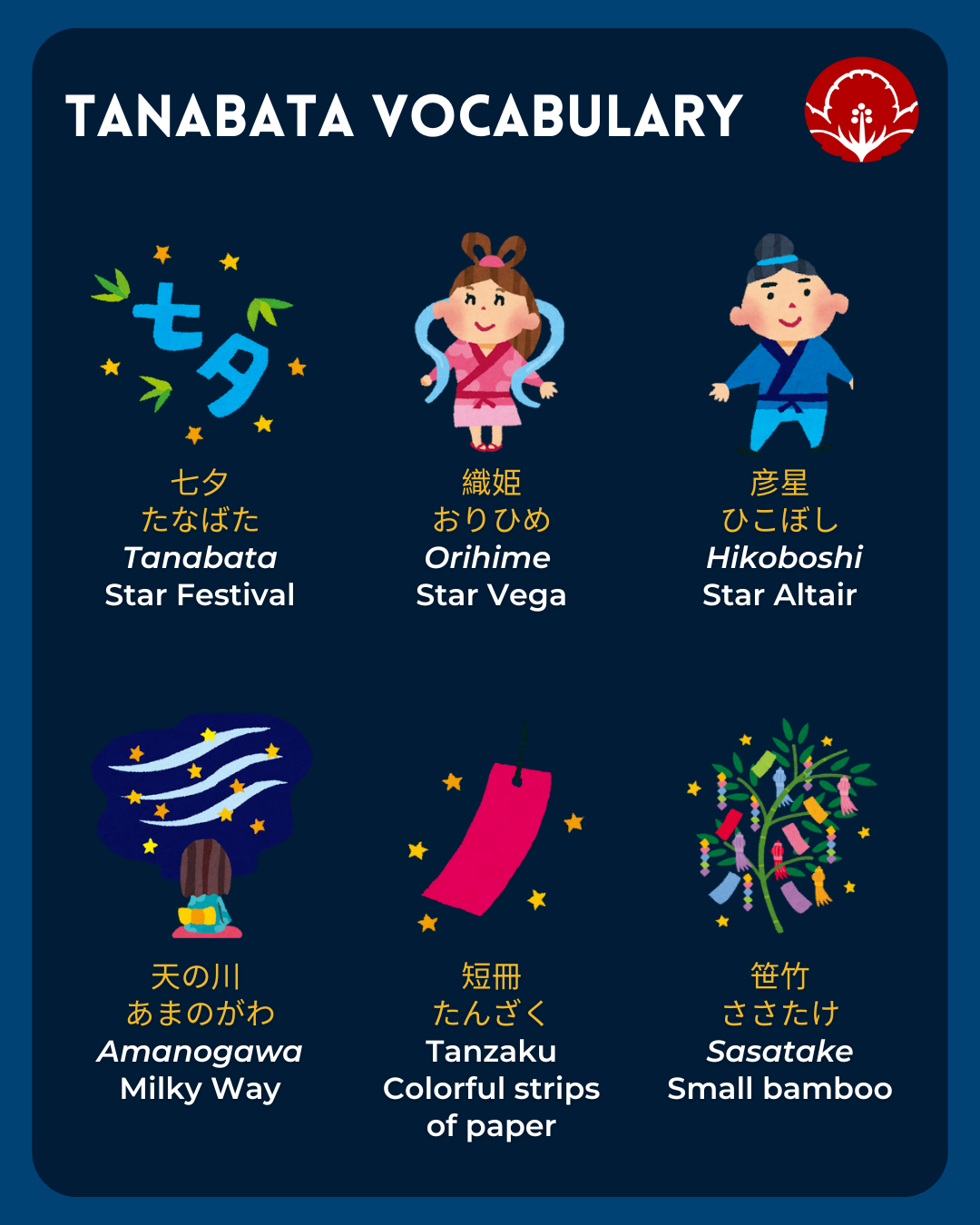Tanabata 七夕 (Star Festival) occurs on the 7th day of the 7th month. Originating from the Chinese Qixi legend, this is a story about two star-crossed lovers who could only meet once a year. This celebration is also known as Hoshimatsuri 星祭り (Star Festival).
The sky deity, Orihime 織姫 (the star Vega), was a hardworking weaver princess. She was introduced by the sky god to another sky deity, Hikoboshi 彦星 (the star Altair), a cow herder. They immediately fell in love, but would spend so much time with each other that they forgot to do their jobs.
The sky god became angry. Their punishment was to be separated by the Amanogawa 天の川 (Milky Way), which forbade them to meet. After seeing Orihime’s deep sadness, the sky god allowed the lovers to reunite once a year on the seventh day of the seventh month. We hope for clear skies on Tanabata for Orihime and Hikoboshi to meet.
A Tanabata tradition is to write wishes on tanzaku 短冊 (colorful strips of paper) and hang it on a sasatake 笹竹 (small bamboo) display. Since the Edo period, stalks of bamboo have been used for the wish tree. It grows tall and straight towards the heavens.
Traditionally, tanzaku comes in five colors, which each have a meaning that may help your wish come true. Black is considered unlucky, so it may be replaced with purple.
Red: Gratitude, Parents, and Ancestors
Blue: Self-Improvement
Yellow: Friendship and Relationships
White: Duty and Responsibility
Black/Purple: Excelling in Academics
 |  |
